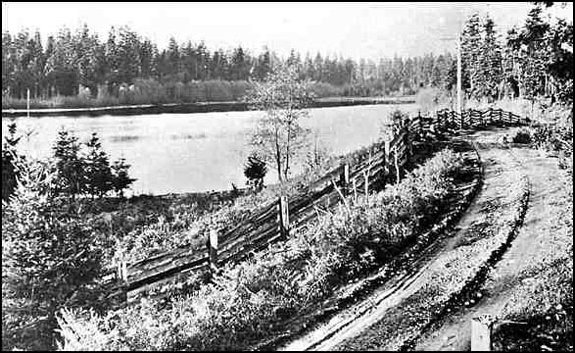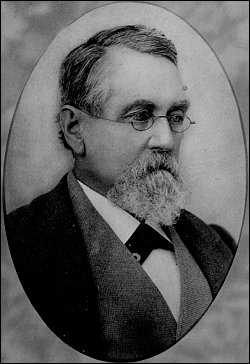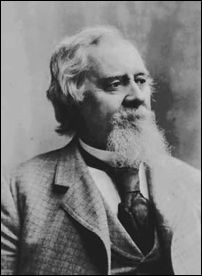Links, background reading and sources
- June Burn's 1931 column series about the 1858 Fraser River gold rush in British Columbia. And her review of the new village of Whatcom where the rush was launched, along with the earliest pioneers there.
- Endnotes to June Burn's 1858 gold rush column and capsule biographies of the pioneers and businesses of Whatcom county in the 1850s, A-L.
- Endnotes to June Burn's 1858 gold rush column and capsule biographies of the pioneers and businesses of Whatcom county in the 1850s, M-Z.
- A biography of Capt. Henry Roeder, the "father" of Whatcom who settled there in 1853, and his wife, Elizabeth Austin Roeder, and their respective journeys from Vermilion, Ohio.
- A biography of Whatcom pioneer Edward Eldridge and his wife, Theresa Lapin Eldridge, the "mother" of Whatcom.
- Whatcom county history, Bellingham and Fairhaven
- Many thanks to descendants of Walter Washington deLacy, especially John C. DeLacy of Portland, Oregon. See Issue 42 of the Subscribers Edition for a full profile of deLacy.
Story posted on July 15, 2005, last updated Feb. 27, 2008
Please report any broken links so we can update them
This article originally appeared in Issue xx of our Subscribers-paid Journal online magazine
 See this Journal website for a timeline of local, state, national, international events for years of the pioneer period. See this Journal website for a timeline of local, state, national, international events for years of the pioneer period.
 Did you enjoy this story? Remember, as with all our features, this story is a draft and will evolve as we discover more information and photos. This process continues until we eventually compile a book about Northwest history. Can you help? Did you enjoy this story? Remember, as with all our features, this story is a draft and will evolve as we discover more information and photos. This process continues until we eventually compile a book about Northwest history. Can you help?
 Remember; we welcome correction & criticism. Remember; we welcome correction & criticism.
 Please report any broken links or files that do not open and we will send you the correct link. With more than 550 features, we depend on your report. Thank you. Please report any broken links or files that do not open and we will send you the correct link. With more than 550 features, we depend on your report. Thank you.
 Read about how you can order CDs that include our photo features from the first five years of our Subscribers Edition. Perfect for gifts. Read about how you can order CDs that include our photo features from the first five years of our Subscribers Edition. Perfect for gifts.
|
You can click the donation button to contribute to the rising costs of this site. You can also subscribe to our optional Subscribers-Paid Journal magazine online, which has entered its seventh year with exclusive stories, in-depth research and photos that are shared with our subscribers first. You can go here to read the preview edition to see examples of our in-depth research or read how and why to subscribe.
|
|
You can read the history websites about our prime sponsors
Would you like information about how to join them?
 Jones and Solveig Atterberry, NorthWest Properties Aiken & Associates: . . . See our website Jones and Solveig Atterberry, NorthWest Properties Aiken & Associates: . . . See our website
Please let us show you residential and commercial property in Sedro-Woolley and Skagit County
2204 Riverside Drive, Mount Vernon, Washington . . . 360 708-8935 . . . 360 708-1729
 Oliver Hammer Clothes Shop at 817 Metcalf Street in downtown Sedro-Woolley, 86 years. Oliver Hammer Clothes Shop at 817 Metcalf Street in downtown Sedro-Woolley, 86 years.
 Joy's Sedro-Woolley Bakery-Cafe at 823 Metcalf Street in downtown Sedro-Woolley. Joy's Sedro-Woolley Bakery-Cafe at 823 Metcalf Street in downtown Sedro-Woolley.
 Check out Sedro-Woolley First section for links to all stories and reasons to shop here first Check out Sedro-Woolley First section for links to all stories and reasons to shop here first
or make this your destination on your visit or vacation.
 Are you looking to buy or sell a historic property, business or residence? Are you looking to buy or sell a historic property, business or residence?
We may be able to assist. Email us for details.
 Peace and quiet at the Alpine RV Park, just north of Marblemount on Hwy 20 Peace and quiet at the Alpine RV Park, just north of Marblemount on Hwy 20
Park your RV or pitch a tent by the Skagit River, just a short drive from Winthrop or Sedro-Woolley
|
Did you find what you were seeking? We have helped many people find individual names or places, so email if you have any difficulty.
|
Tip: Put quotation marks around a specific name or item of two words or more, and then experiment with different combinations of the words without quote marks. We are currently researching some of the names most recently searched for — check the list here. Maybe you have searched for one of them?
|
Please sign our guestbook so our readers will know where you found out about us, or share something you know about the Skagit River or your memories or those of your family. Share your reactions or suggestions or comment on our Journal. Thank you for taking time out of your busy day to visit our site.
|

View My Guestbook
Sign My Guestbook
|
Email us at: skagitriverjournal@gmail.com

Mail copies/documents to Street address: Skagit River Journal, 810 Central Ave., Sedro-Woolley, WA, 98284.
|
|

 810 Central Ave.,
810 Central Ave., 


